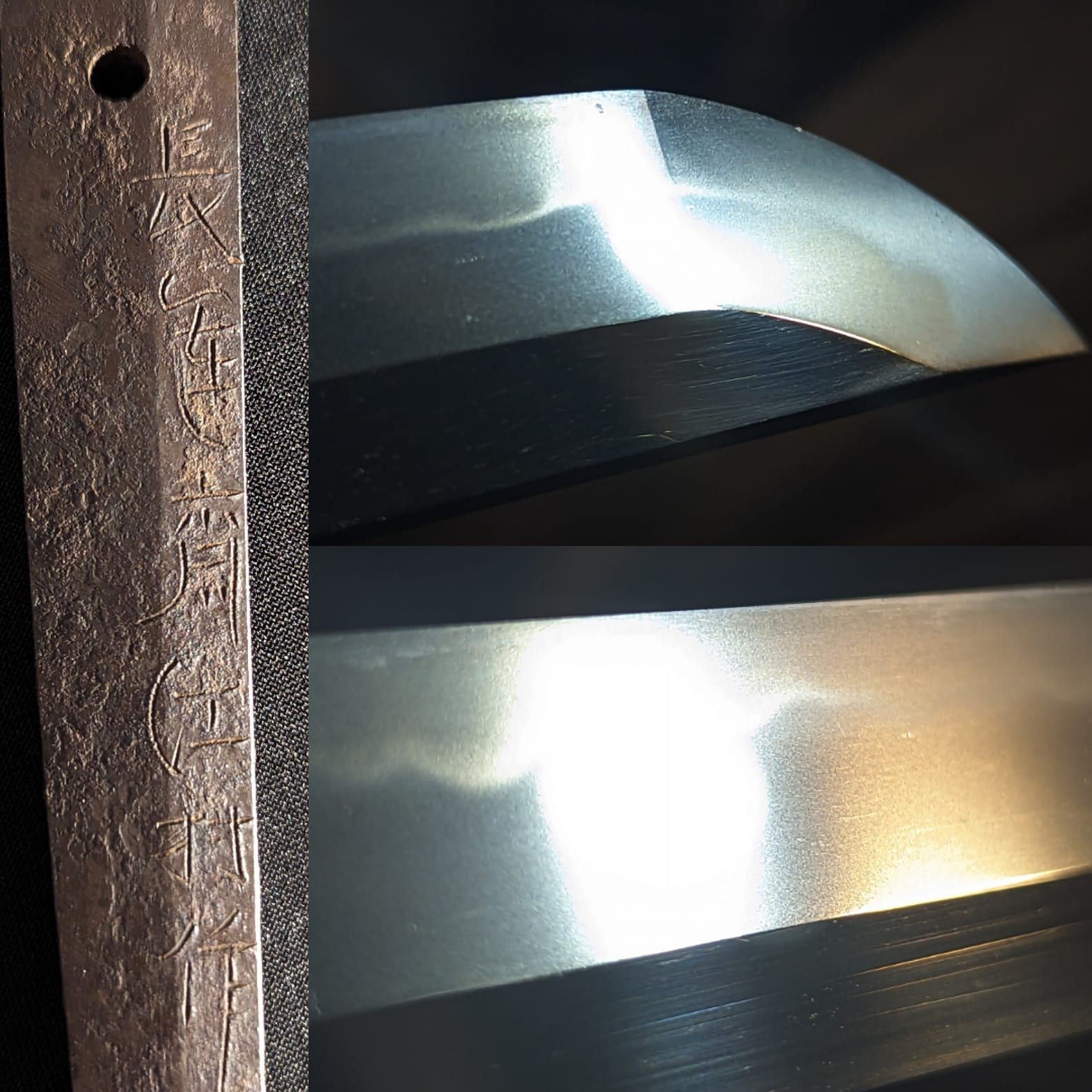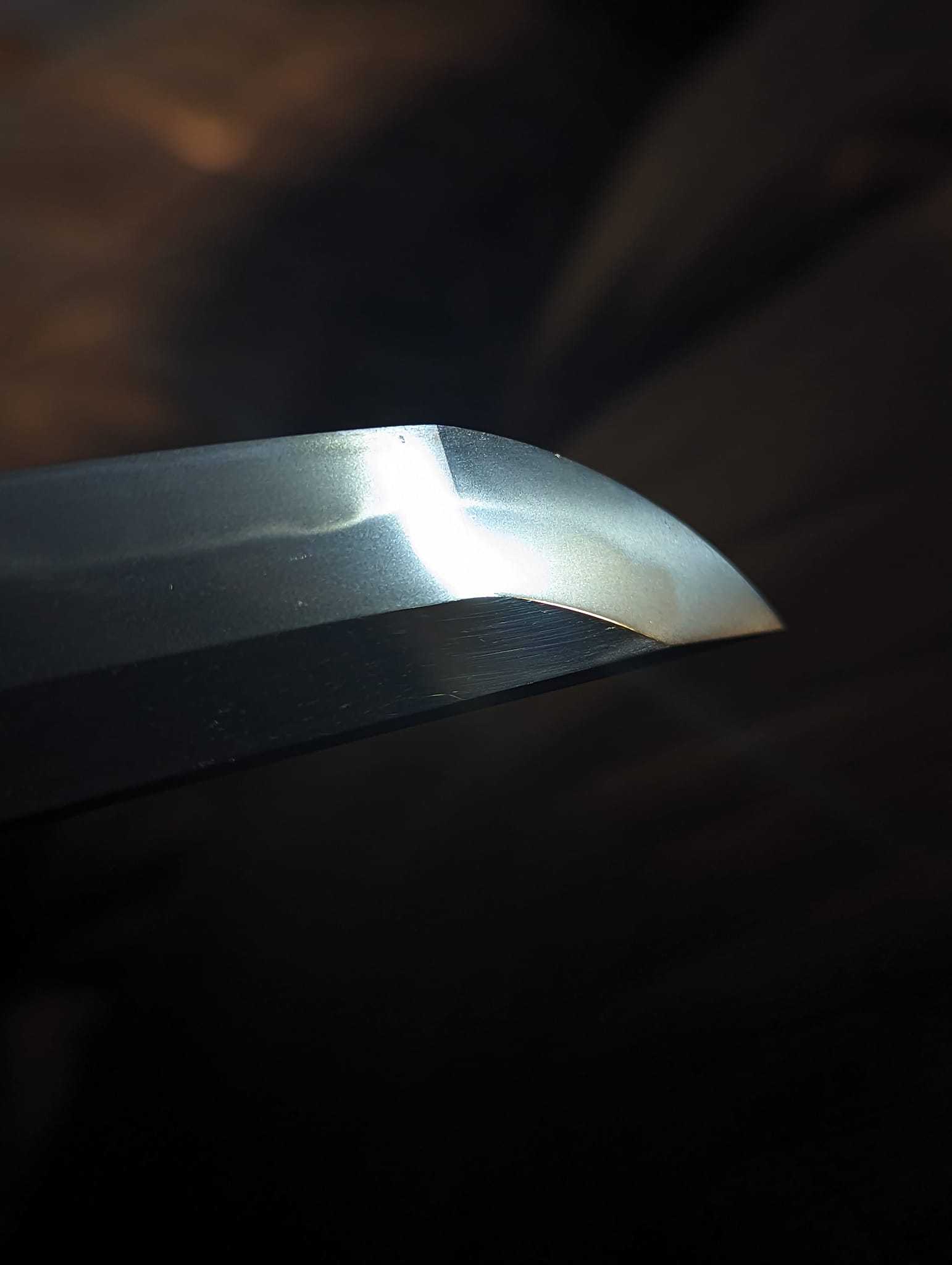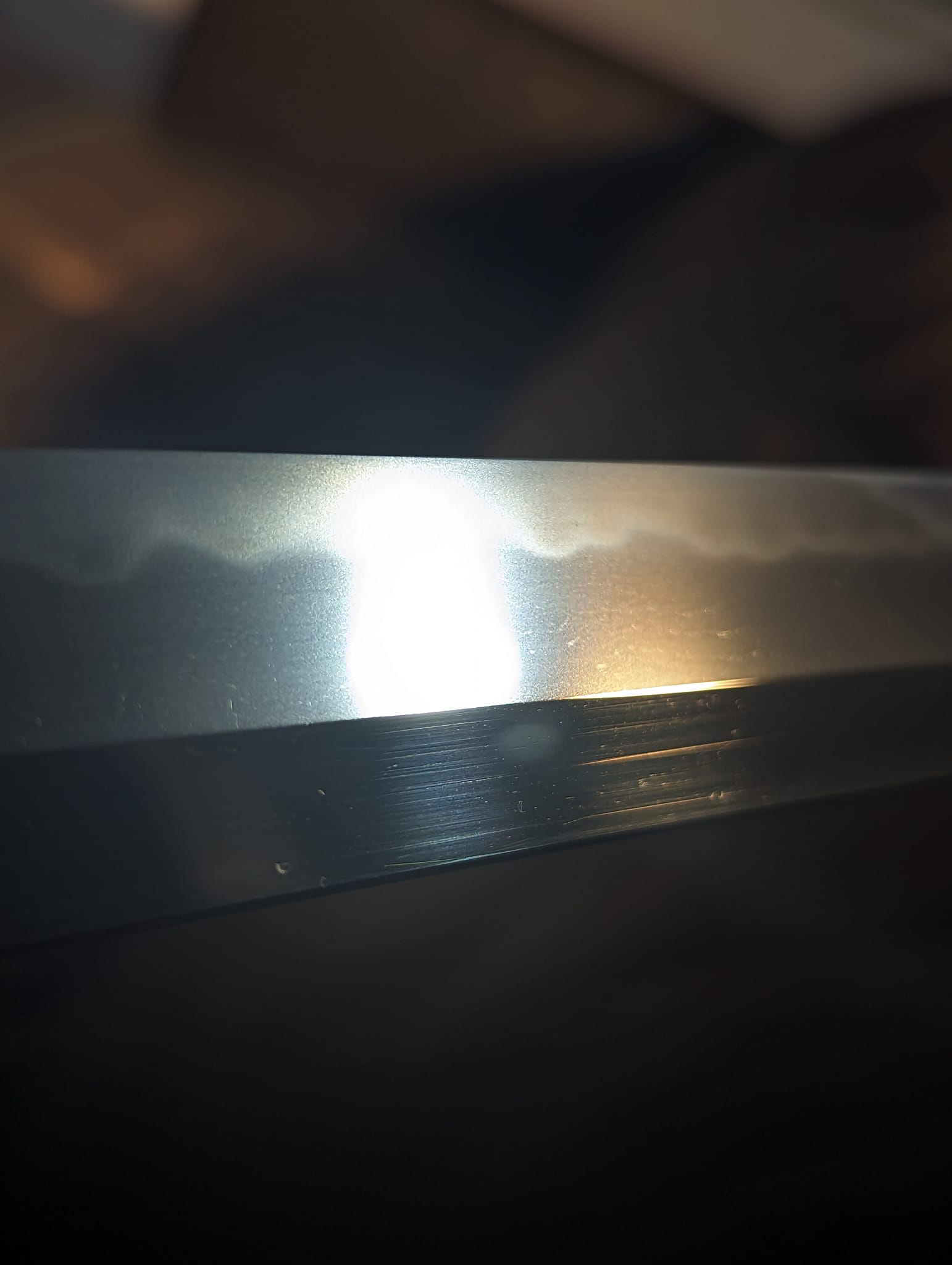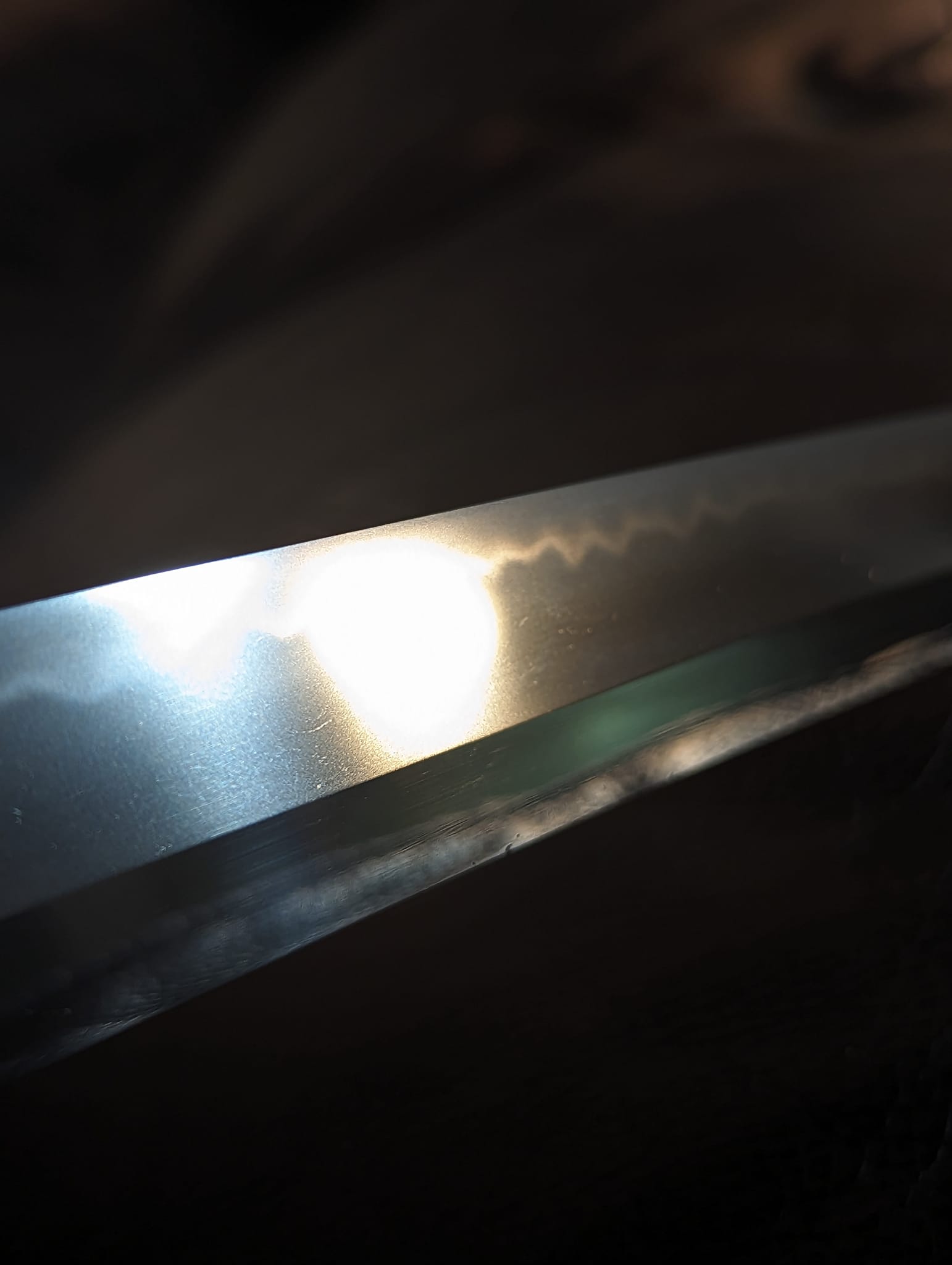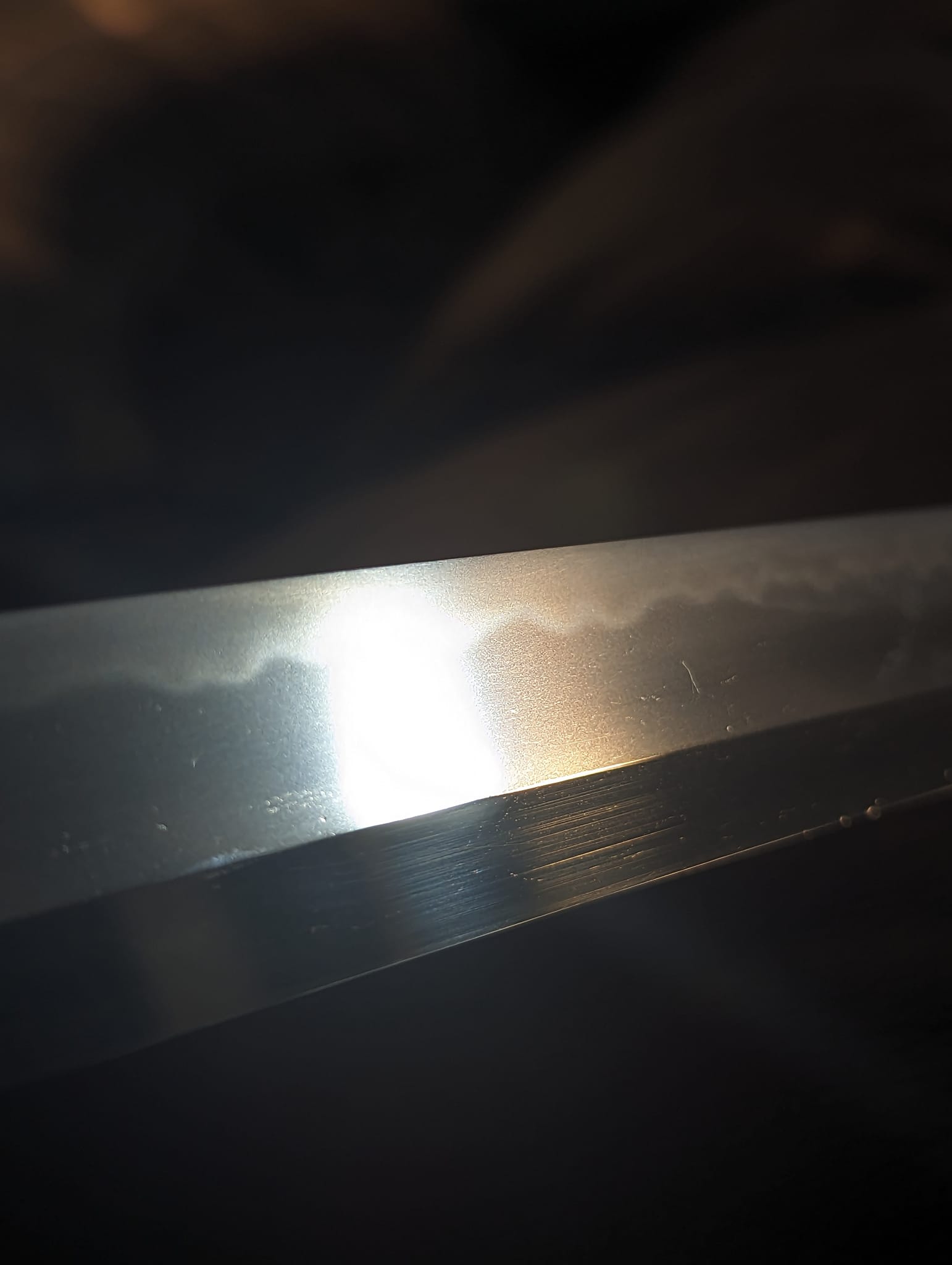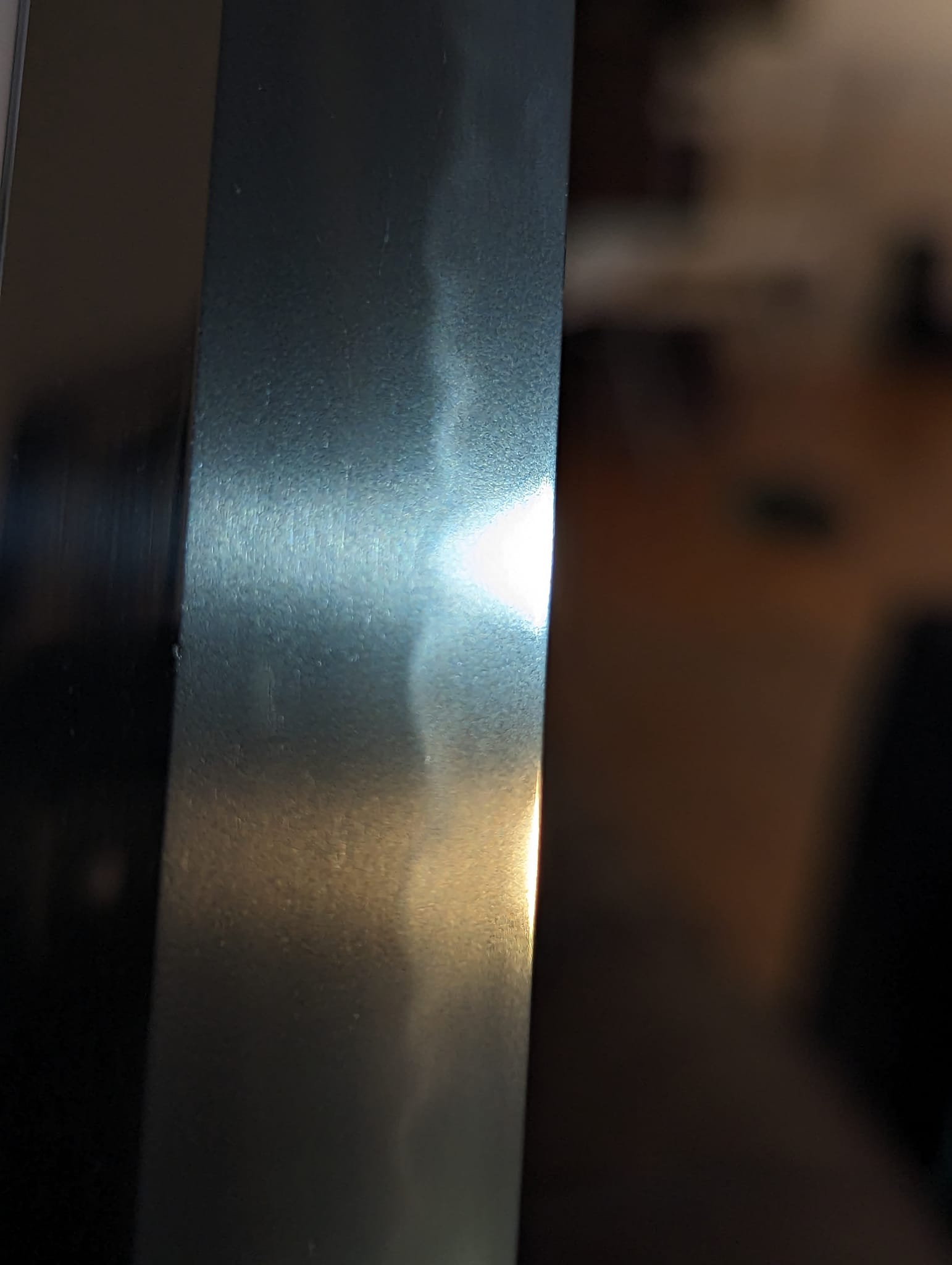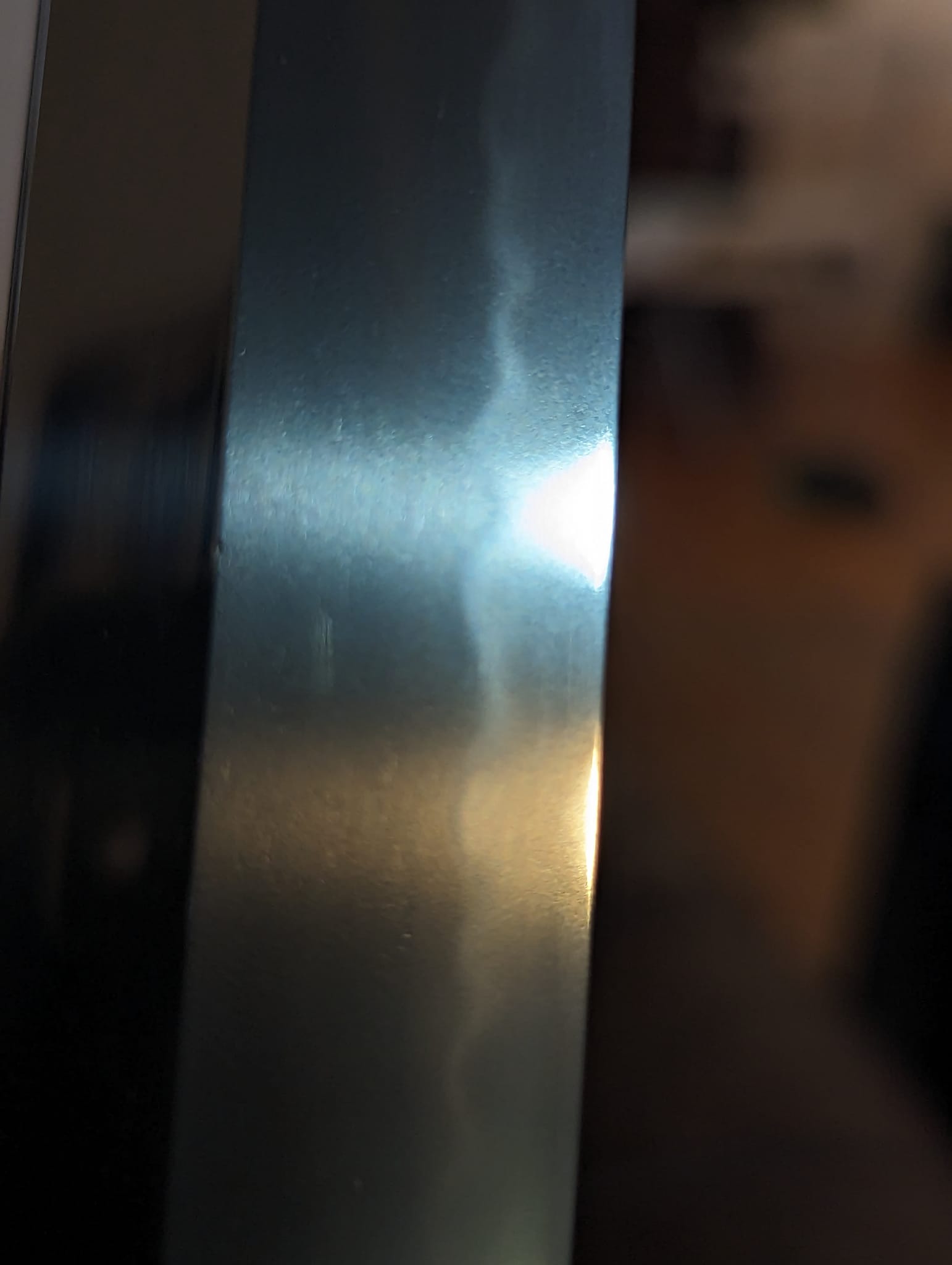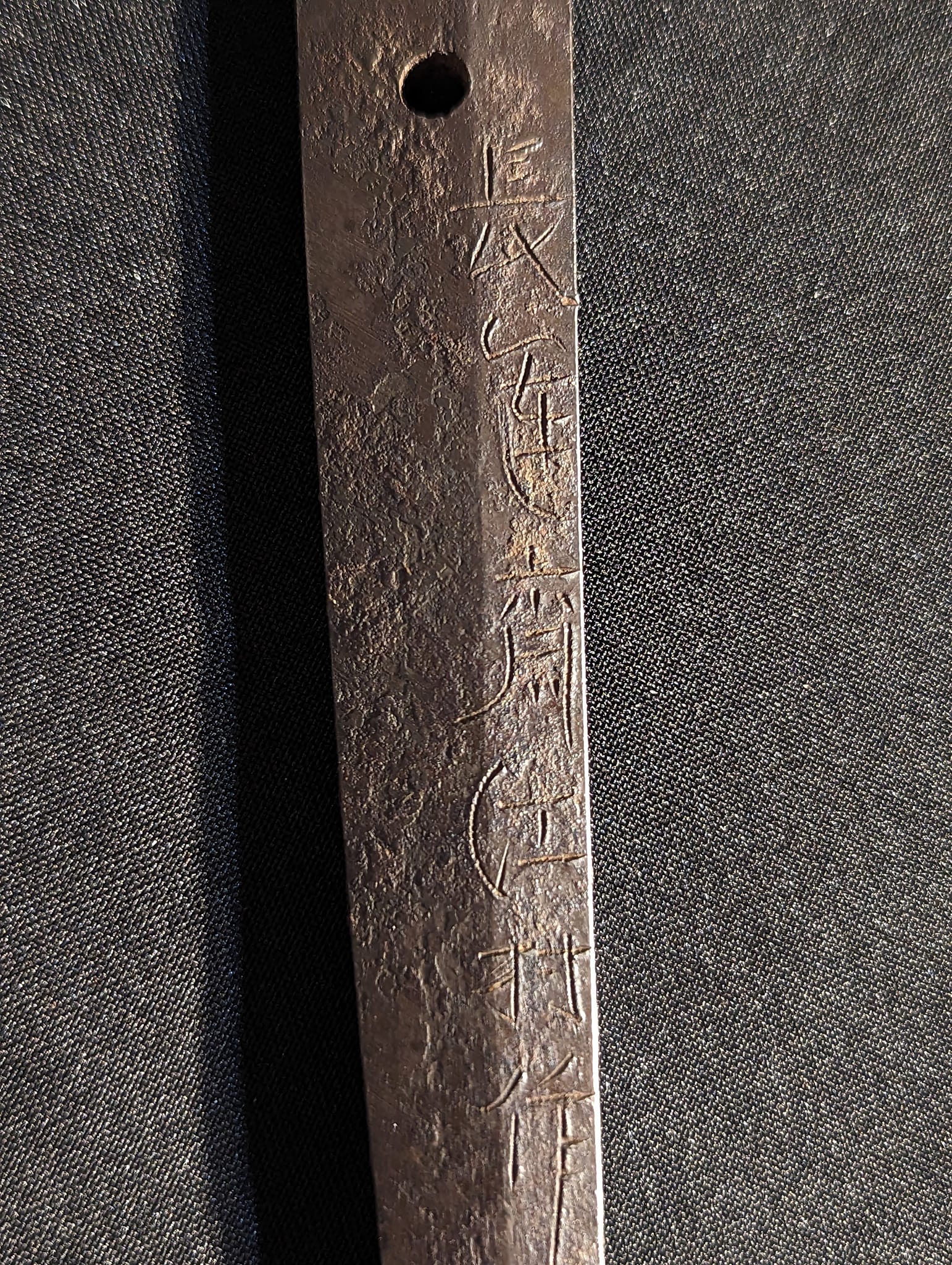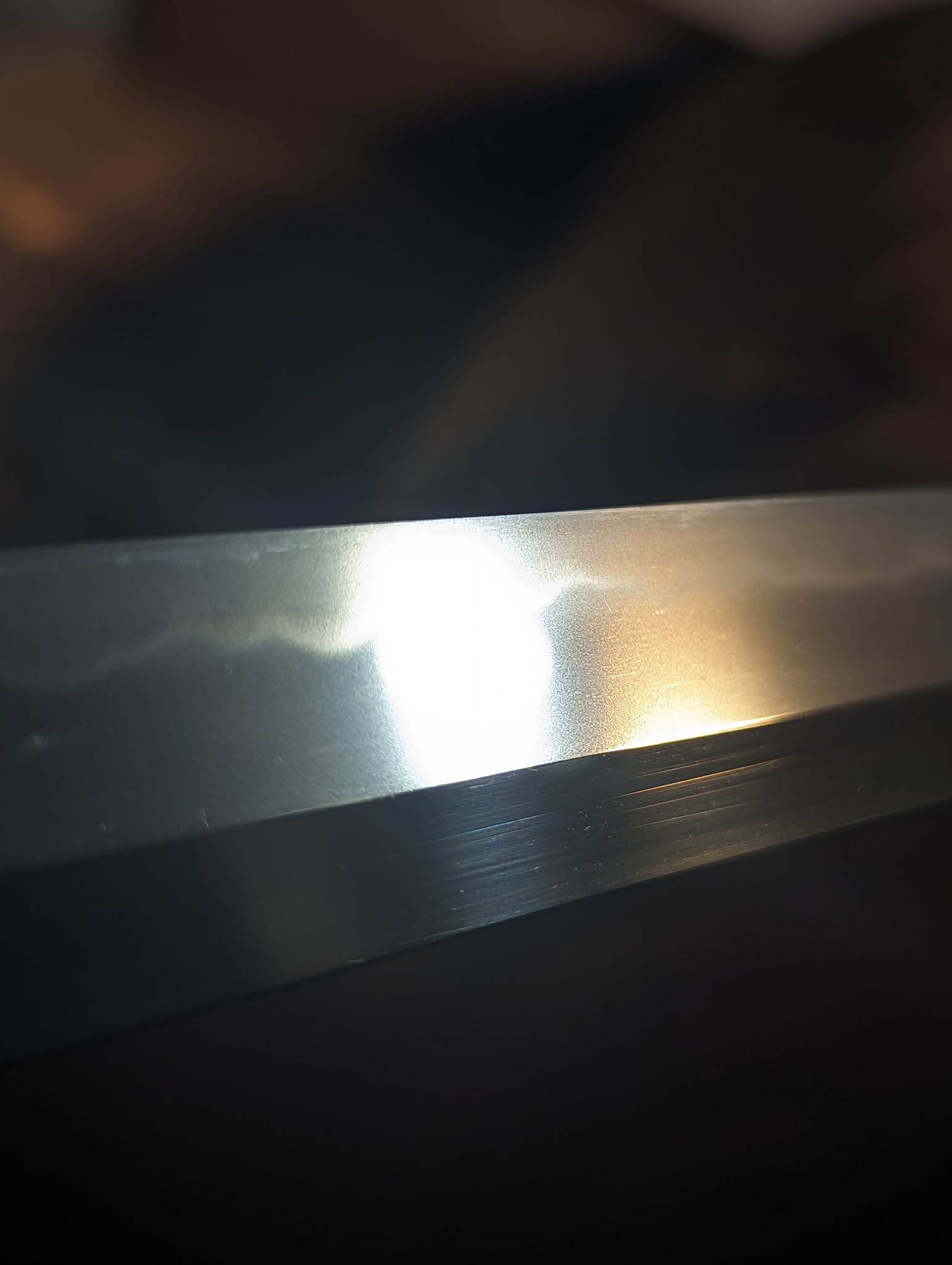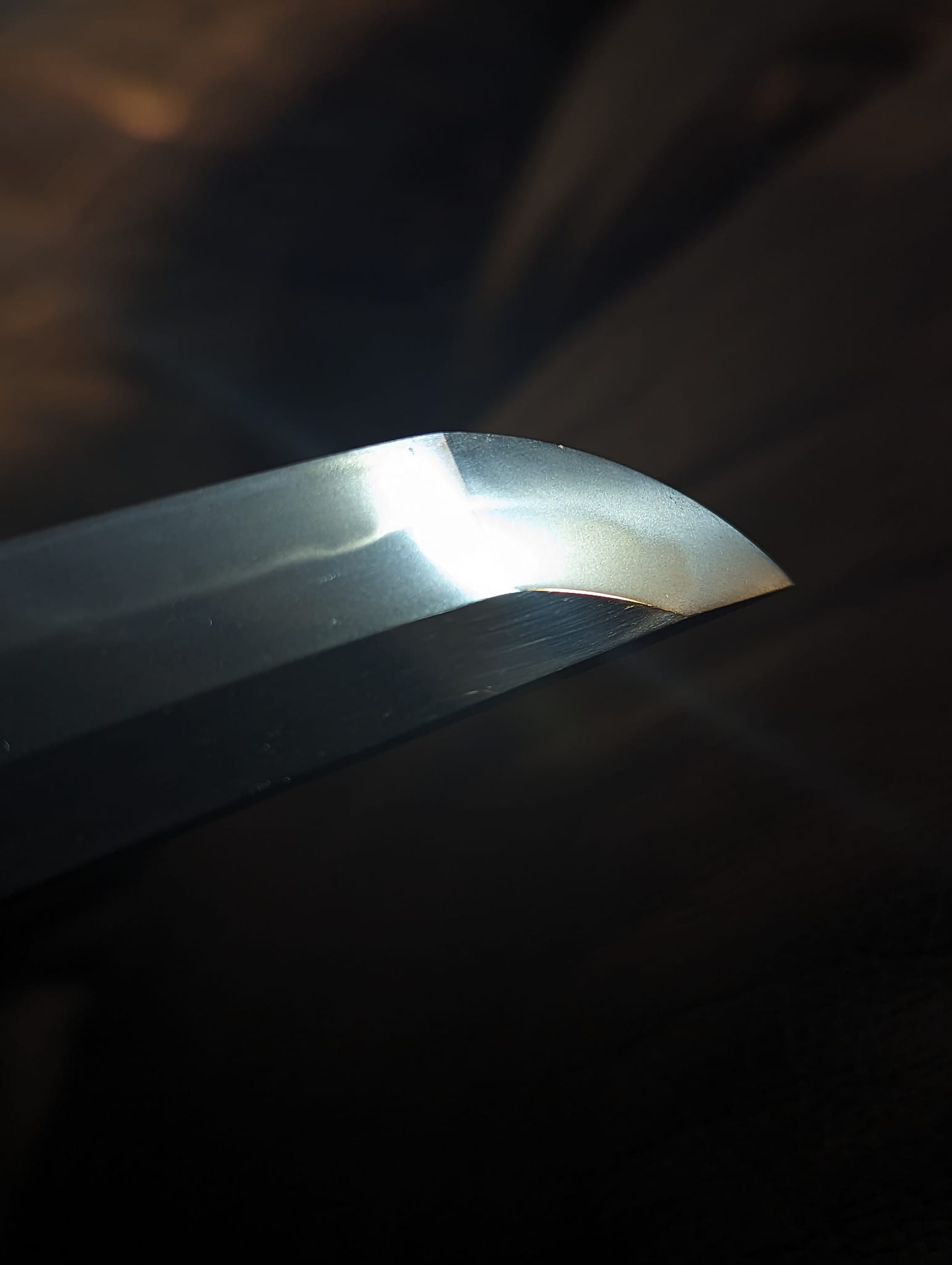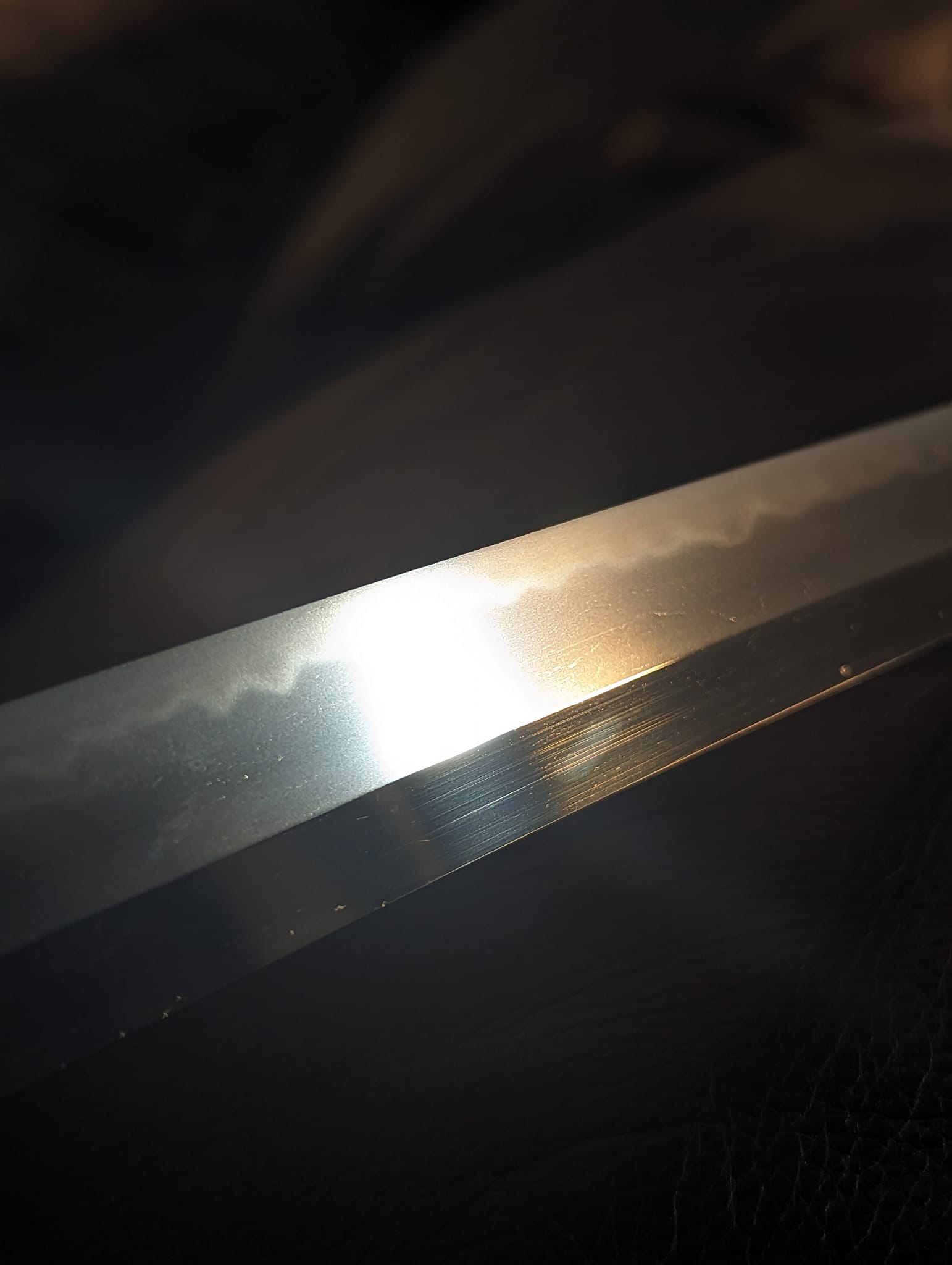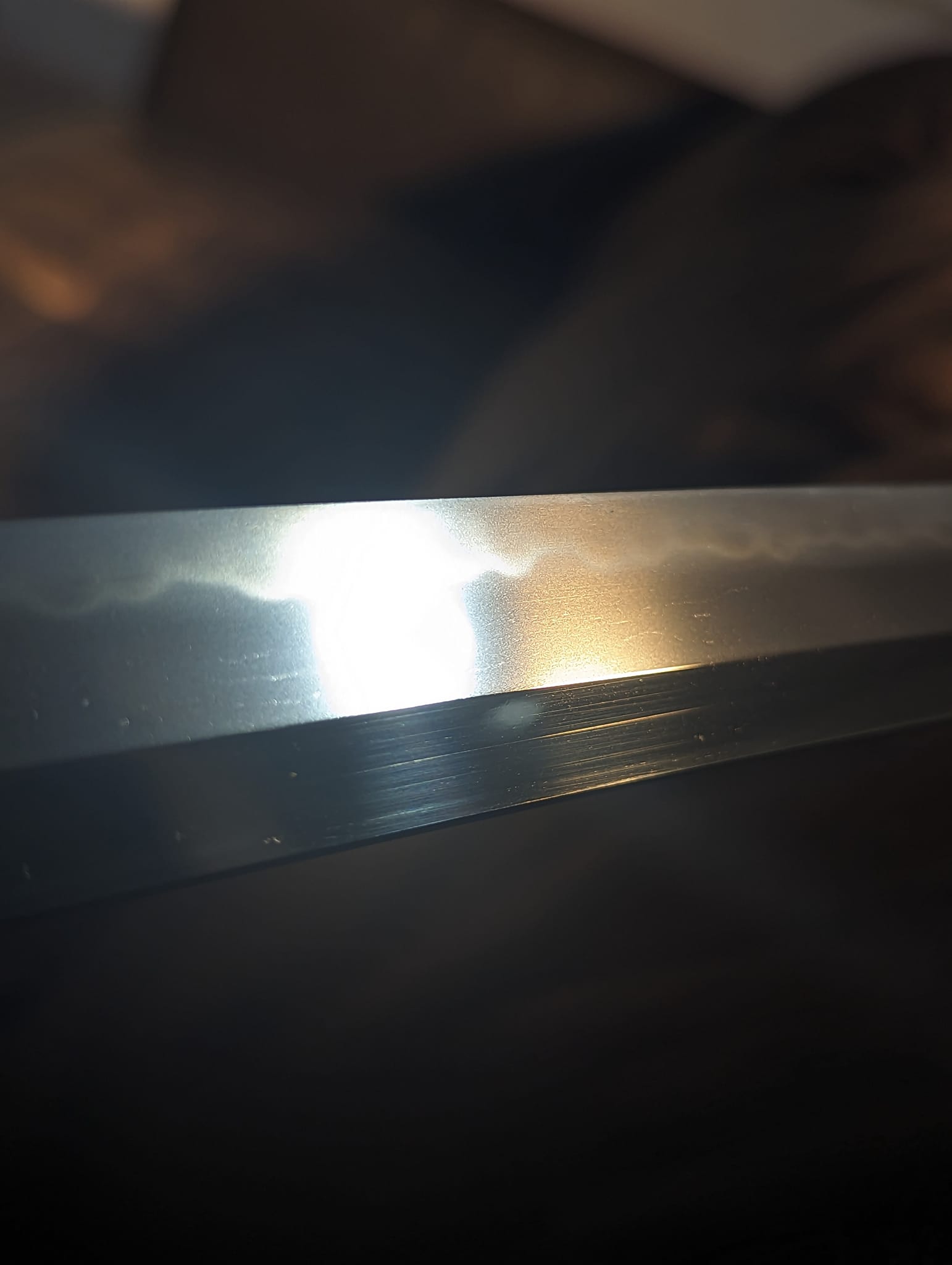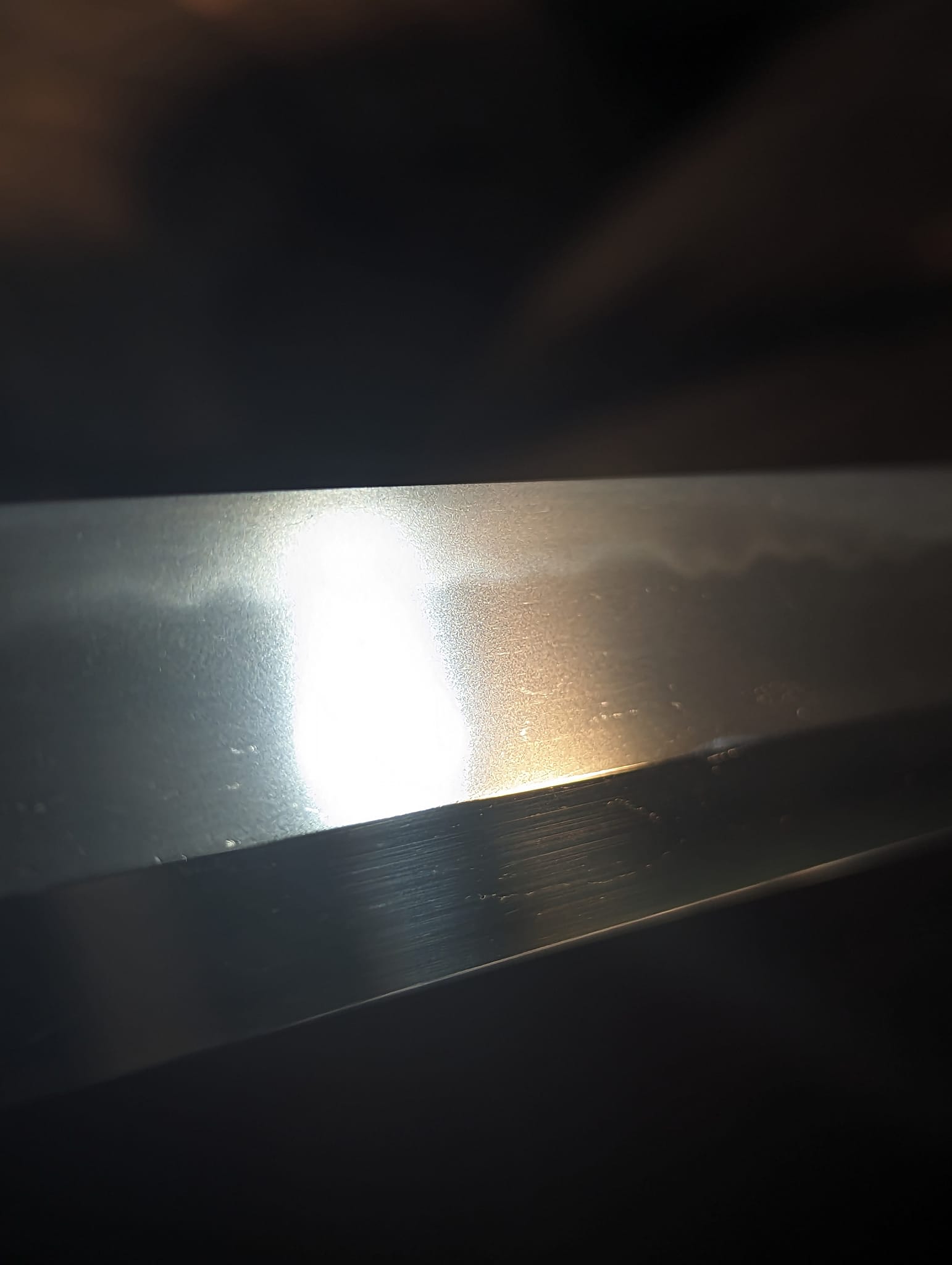During World War II a swordsmith named Chounsai Emura (real name: Emura Shigetato), originally from Tokushima in Shikoku, operated a swordmaking school on the grounds of the Okayama Prison. He made sword blades himself and also trained prisoners to make sword blades in support of the Japanese war effort. Emura san died in 1960. He made numerous very good blades which are now much sought after by collectors and students of the Japanese sword.
The following is an excert from an article from TOKEN SYNZU (Showa 55, Feb. 7, No. 213) as translated by Chris Bowen:
Yoshikawa Tsunetaro (father of the current NTHK head, Yoshikawa Kentaro) wrote an article in the Token Synzu called “Nihonto to Kyo ni”, which means roughly, “Swords and I”. In this article, Yoshikawa sensei reminisces about his days as a polisher and official for the military’s sword polishing office during the war years. In the middle of the article, he mentions an Emura san, the head of a prison in Okayama. Yoshikawa states that in his official capacity, he often travelled around the country to inspect and “looked in on” various tanrenjo around the country. He mentions that his visit to this prison forge was perhaps the most touching of his trips. He states that Emura san signed blades “Emura” and sometimes “Emura Chounsai“. He says that he made blades in the Bizen style with choji hamon.
The article reads:
“Among my visits, the most memorable was a visit to a prison in Okayama. The head of the prison, Mr. Emura, while not a professional smith, made swords as a hobby. The swords made (by Emura) were polished within the prison by the prisoners. Blades were signed using his family name, “Emura”, and also “Emura Chounsai”. These blades were made with a nioi based shimatta choji in the Bizen tradition.
At first, before entering the facility, I wondered what type of person would be in this prison-I felt a bit of anxiety at the thought of these criminals. When the time came and I entered the prison, I witnessed the prisoners, large streams of sweat pouring from their brows as they worked, and I forgot my prior anxiety. I clearly remember the strenuous effort with which the prisoners toiled as they learned the craft of the sword.”
Kiyoshi Morita noted that Emura exhibited his swords at the 1st Gunto exhibition in 1943; these were signed as being from Doshu in Kochi prefecture not from Bishu in Okayama. This would lead one to speculate that before 1940 Emura was in Takamatsu city in Kagawa prefecture in Shikoku. Around 1940 he was located in Okayama prefecture (Bishu-mei) as the head of the Okayama prison, then around 1943 he returned to Kochi prefecture. Probably various mei were used as he was the head of Okayama prison and traveled considerably.
There is at least one documented case of a Japanese Army General surrendering an Emura blade at the end of the Pacific Conflict. Lt-Gen.(Japanese 17th Army) Kanda Masatane’s sword, an Emura made blade, was surrendered on September 16, 1945 in New Guinea to Brigadier Garret of the Australian 2nd Corp. The sword now resides in the Australian War Museum (cat. no. AWM20314). [This information was obtained from Fuller & Gregory “Japanese Military and Civil Swords and Dirks”. ]
Emura blades have received Hozon origami from the NBTHK in Japan. Emura blades have also received Shinteisho and Kanteisho origami from the NTHK. This confirms that Emura blades are judged to be true gendaito.
Chounsai Emura worked in the Bizen tradition. The blades which he made are rather robust blades but many are barely over the 2 shaku length to qualify as daito. The hamon is generally in suguha or choji-midare (may be mixed with gunome-midare). The hada can be itame (may tend toward mokume) or mixed itame – masame. At least until 1942, Emura personally did the hardening (yaki-ire) of all the swords made at Okayama prison.

